Test results and TIM impressions
As mentioned earlier, primarily my oldest i9-12900K CPU acts as the heat generator for today’s test. This CPU has been operated (and bent) in standard LGA1700 sockets including ILM for the longest time by far and thus represents the most real-world test case also with regard to long-term use. Nevertheless, the results are additionally cross-checked with a 2022 produced i9-12900KS CPU with a different IHS manufacturing process. In any case I can already say, the differences between two given configurations can be reproduced to within 0.8 °C with the different CPUs and motherboards.
Looking first at the Corsair iCUE H150i RGB PRO XT 360 mm All-in-One watercooler, it should be noted for now that it does not officially qualify for mounting on an LGA1700 socket. However, the flexible threads in the plastic backplate allow it to be mounted at least with the 78×78 mm hole spacing and therefore be used as a reference for the other coolers. Although the contact pressure here is significantly lower than with the other coolers, the imprint of the thermal paste looks promising. Only the different curvature of the base plate between the left and right stands out, which is probably due to the internal construction of the block pump unit.
As we already noticed in the previous review of the Washermod, the different degrees of CPU bending are relatively indifferent to the H150i. Since the base plate of the cooler is already extremely convex as shown at the beginning, it already has good contact in the center of the CPU without modification, which does not get better by using a flatter CPU. Overall, though, this AIO is surprisingly well suited for cooling a 250W Alder Lake CPU, with or without modifications.
In any case, however, memory training must be performed again after changes to the ILM to ensure that it remains stable. In contrast to the Asus Maximus Z690 Apex, the EVGA Z690 Dark Kingpin does not automatically recognize that the contact resistances have changed slightly and has to be manually triggered to perform a new training. This would also explain the occasional comments under the Washermod articles that reported unstable RAM after the mod. In this case, a new memory training would most likely stabilize the RAM again. The easiest way to do this is to pull a RAM module once, let the system boot into Windows, shut down the system again, plug the RAM module back in and boot the system again.
Since the Alphacool XPX Aurora has difficulty making full contact with the CPU, it is a particularly interesting candidate for the tested modifications. This also confirms the improvements measured in previous tests with 1 mm thick washers of 4-6 °C. The Thermal Grizzly 12th gen frame can even double the gain of the washers on the XPX water block, to a whopping 10 °C savings. In the imprint image of the thermal paste, this can also be seen as a full-surface even pattern, whereas previously less contact pressure was recognizable, especially in the center of the IHS.
Interestingly, both Alphacool’s Apex Backplate alone and together with the TG Frame only brings a savings comparable to the washers. Here, the different approaches seem to partially cancel each other out, which I could not wrap my head around fully yet. When using the Thermal Grizzly frame, you must always pay close attention to the correct torque during installation or, as in my tests, try to install the frame several times.
The Corsair XC7 with its permanently installed M3 screws unfortunately cannot be tested with the Alphacool backplate, so like the AIO, there are only tests with washers and TG Frame. Here, the gain is slightly smaller in each case than with the XPX block, which is probably again due to the different convexity of the base plate. Again, however, the results are repeatable and far from negligible.















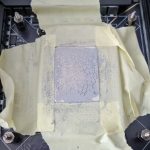
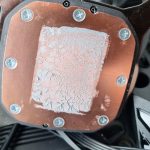

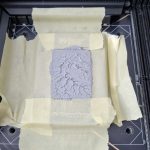
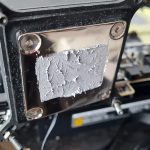
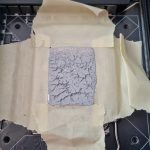
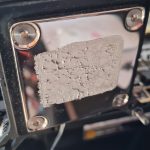

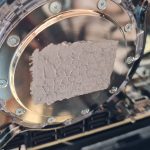
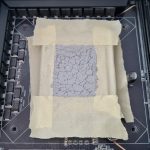





















44 Antworten
Kommentar
Lade neue Kommentare
Mitglied
1
Mitglied
Urgestein
Urgestein
1
Veteran
Urgestein
Veteran
Urgestein
Urgestein
Urgestein
Urgestein
Veteran
Urgestein
Urgestein
Urgestein
Urgestein
1
Alle Kommentare lesen unter igor´sLAB Community →